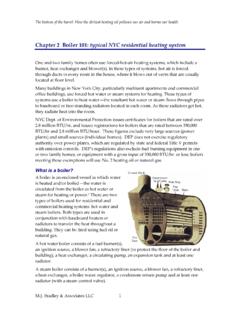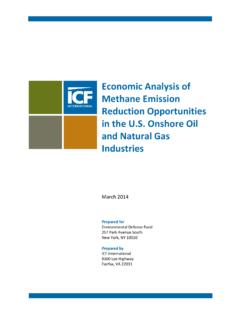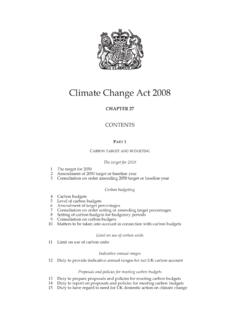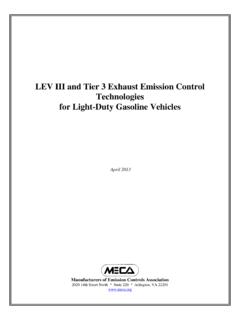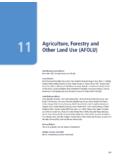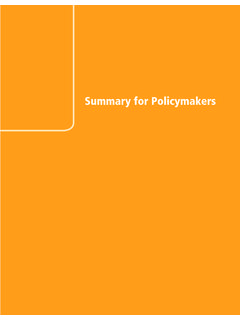Transcription of Carbon Market California - Environmental Defense Fund
1 Carbon Market CaliforniaA COMPREHENSIVE ANALYSIS OF THE GOLDEN STATE S CAP-AND-TRADE PROGRAM / YEAR ONE 2012 2013 Carbon Market CaliforniaA COMPREHENSIVE ANALYSIS OF THE GOLDEN STATE S CAP-AND-TRADE PROGRAMYEAR ONE: 2012 2013 AuthorsKatherine Hsia-KiungEmily ReynaTimothy O ConnorAcknowledgmentsThis report is the result of several individuals hard work and time. The authors would like to thank Susanne Brooks, James Fine, Alex Hanafi, Larissa Koehler, Ruben Lubowski, Joaquin McPeek, Chris Meyer, Erica Morehouse, Robert Parkhurst, Shira Silver, Gernot Wagner, and Derek Walker. The authors are especially grateful to those who contributed content to this report, including Karsten Barde, Dirk Forrister, Morgan Hagerty, Lenny Hochschild, Emilie Mazzacurati, Rick Saines, Daniel Scarbrough, Robert Stavins, Mark Struk, and Andre Templeman. Special thanks also to the designers, Christina Baute, Janice Caswell, and Bonnie photo: Elena Kalistratova/Getty Defense FundEnvironmental Defense Fund is dedicated to protecting the Environmental rights of all people, including the right to clean air, clean water, healthy food and flourishing ecosystems.
2 Guided by science, we work to create practical solutions that win lasting political, economic and social support because they are nonpartisan, cost-effective and fair. 2014 Environmental Defense FundThe complete report is available online at Defense Fund / of contentsPreface vExecutive summary viFirst year conclusions viiFuture considerations viiiCalifornia cap-and-trade policy: an overview 1 Legislative history of Assembly Bill 32 (AB 32) 2 Cap-and-trade model 2 California s cap-and-trade program 3 State of the Carbon Market 7 Quarterly auctions 8 Auction proceeds 10 Secondary Market 11 Offsets Market 15 Carbon price forecasts 17 Linkage 17 Relevant litigation with developments in 2013 18 Reported greenhouse gas emissions 19 Proposed regulation amendments 19 International collaborations and memorandums of understanding (MoUs) 20 Timeline 22ivCARBON Market California / Table of contentsExpert interviews: California s Carbon Market 24 Lenny Hochschild / Broker / Evolution Markets 25 Emilie Mazzacurati / Industry consultant / Four Twenty Seven 26 Morgan Hagerty / Investor / CE2 Capital Partners 27 Karsten Barde / Regulated entity representative / Pacific Gas and Electric Company (PG&E) 28 Robert Stavins / Academic expert / Harvard University 29 Notes 31 Figures and TablesFigure 1: AB 32 emissions reduction target compared to the business-as-usual scenario 2 Figure 2: The declining cap and the business-as-usual emissions projections through 2020 3 Figure 3: Scope of the cap-and-trade program and its complementary policies under AB 32 4 Table 1: Current auction of 2013 vintage allowances 9 Table 2: Advance auction of future vintage allowances (2015 and 2016 vintage) 9 Table 3: Qualified bidder breakdown 9 Figure 4: Breakdown of qualified bidders across all auctions by type 10 Figure 5: Total quarterly auction proceeds from the first five auctions 11 Figure 6.
3 Allowance price and traded volume on the secondary Market (Vintage 2013, December 2013 contract) 12 Figure 7: End-of-week bid/ask spread for Vintage 2013 (December 2013 contract) 13 Figure 8: Vintage 2013, December 2013 contract price on secondary Market 13 Figure 9: Vintage 2016, December 2015 contract price on secondary Market 15 Table 4: Number of ARBOCs issued (as of the end of November 2013) 16 Table 5: Mandatory GHG emissions reporting from 2008 to 2012 (in MMTCO2e) 19vEnvironmental Defense Fund / s Global Warming Solutions Act, also known as AB 32, was signed into law on September 27, 2006. Environmental Defense Fund co-sponsored the bill, which stated that California may adopt a Market -based regulation to cut greenhouse gas (GHG) emissions. That Market -based regulation, a cap-and-trade program, is one of many efforts developed and implemented over the last seven years to reduce the state s GHG emissions to 1990 levels by the debut and implementation of the cap-and-trade program in 2013, California has once again proven to be a leader in Environmental policy in the United States.
4 Not only is the state setting an example for the rest of the country in addressing GHG emissions, it s doing so in a flexible, economically efficient fashion, allowing the economy to prosper, while improving public data and observations presented in this report provide tangible evidence of the program s success in its first year. The allowance auction process has gone well, the secondary Market has shown stability, and prices indicate low marginal abatement costs for compliance entities thus far. The smooth transition to a capped economy is an impressive accomplishment, due in large part to a carefully con structed regulation that involved a rigorous stakeholder engagement process and leveraged international lessons learned in building Market -based , California is a bright spot not only in the , but internationally as well. California s regional leadership is evident through the Western Climate Initiative and the recently signed Pacific Coast Collaborative Climate Action Plan.
5 Beyond North America, the memorandums of under standing (MoUs) signed with China and Australia show that California s program is already regarded internationally as a leading is still work to be done to ensure that the program continues on a path of success to 2020 and beyond. Organizations like IETA and EDF will continue to provide input towards achieving this goal. Building deeper collaborations and alliances in the coming years not only across jurisdictions, but also across businesses and regulators will be critical to ensure emissions reductions are achieved in a manner that allows our economy to prosper as the scope of the cap broadens in 2015 and the interaction with complementary measures is better we know, California cannot solve the problem of climate change alone. The linked California and Quebec Carbon Market launching in 2014 is an important development, which, if successful, has the potential to encourage other jurisdictions to come forward with programs of their own.
6 Further, upcoming federal action on power plants through Clean Air Act 111(d) standards will put an even greater spotlight on California from states that are looking for cost-effective solutions to reduce emissions and meet EPA s been a long and, at times, arduous process from the passage of AB 32 to the eventual imple mentation of California s landmark cap-and-trade program. However, after its inaugural year, most would agree that the state has developed a program to be proud of one that is poised for future success and emulation across other economies, both inside and outside Forrister, President and Chief Executive OfficerInternational Emissions Trading Association (IETA) Carbon Market California / Executive summary viExecutive summaryJanuary 1, 2014 marked one year since the start of California s landmark cap-and-trade program, a Market -based system to reduce greenhouse gas (GHG) pollution. The program will be the second-largest Carbon Market in the world, after the European Union s, and will cover 85% of all Carbon pollution in the state by 2015.
7 It is the most discussed program in a suite of strategies being deployed to achieve the goal of California s Global Warming Solutions Act also known as Assembly Bill 32 (AB 32) a 2006 law requiring the state to reduce GHG emissions to 1990 levels by 2020. California is the eighth-largest economy in the world and the first state in the nation to employ an economy-wide cap-and-trade program. While no state or country can stop climate change alone, California s Environmental policies have a history of success and replication. The importance of California s program is thus magnified by the example it sets, and the world is watching to see whether the state s Carbon Market will year into the program, the outlook is positive. California s cap-and-trade system weathered legal challenges and demonstrated a successful launch and viability during its initial year. In the first five auctions, all of the offered emission allowances usable for com pliance in 2013 were sold. Similarly, the secondary Market for Carbon allowances has shown stability, and Carbon prices close to the floor indicate the long-term possibility of low marginal abatement costs for regulated entities.
8 Contrary to some predictions of harsh economic damage, capping Carbon pollution in California has occurred amidst sustained and promising economic recovery and growth, including a stronger housing Market and lower unemployment report provides an overview and analysis of California s Carbon Market after one year in operation. Included are a background on the cap-and-trade program, an account of the Carbon Market s progress to date, and an analysis of what the Market s performance means for California s Environmental and economic goals. This analysis includes in-depth summaries and trends observed from the quarterly auctions and secondary Market activity, along with evaluations of Market performance by industry experts and academics. Updates regarding litigation, proposed regulatory amendments, and international agreements are also key conclusions from the program s first year and five key considerations for the program s future are highlighted on pages vii and ConnorviiEnvironmental Defense Fund / year conclusions1.
9 The successful state-run auctions are evidence of a well-constructed, strong, and adaptive policy. California had the good fortune of learning from predecessor cap-and-trade programs like the European Union Emissions Trading System (EU-ETS) and the Regional Greenhouse Gas Initiative (RGGI). The five successful quarterly auctions conducted thus far are evidence of a strong design for California s program. Each auction has shown a solid demand for current year allowances, with numerous compliance entities participating and allowance prices remaining stable and reasonable. The California Air Resources Board (CARB) has developed a robust administrative framework. To date, there have been no signs of Market manipulation, the auction platform and logistics have been straightforward, and key Market communications have been timely and well The secondary Market for California Carbon allowances is robust and healthy. Although the offset Market was quiet, late 2013 issuance of CARB offset credits suggests greater offset Market activity lies ahead.
10 Since the first auction commenced, allowance prices have stabilized on the secondary Market and the volume of traded allowances has increased. This reflects increased confidence, familiarity, and participation in the Market . Furthermore, since CARB offset credits have been issued and the first surrender date for compliance instruments by regulated entities approaches in November, it is likely that increased interest in the Market will result in more offset Wise investment of the auction proceeds will be an integral part of achieving the state s AB 32 pollution reduction goals. State auction proceeds $533 million to date will boost clean energy in California , improve air quality, and create jobs. California law requires that auction proceeds be invested in further reducing GHG emissions. Although the goal of the cap-and-trade program is not to raise money, this first year of auctions has shown that a meaningful amount of money can be generated from the sale of allowances.
